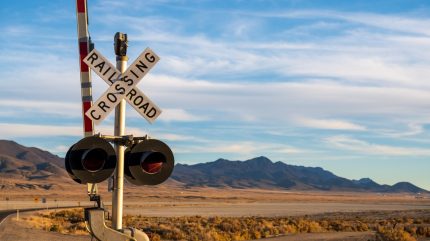
The University of New Mexico (UNM) School of Engineering in the US has announced research aimed at improving safety and maintenance on small railroad lines.
The upcoming Rail Center for Research Enhancing Short Line Transportation (CREST), funded by a $6.8m Consolidated Rail Infrastructure and Safety Improvements (CRISI) Programme grant, is slated to launch this autumn with ten collaborative research initiatives involving universities and railroads.
Institutions such as Penn State, Kansas State University, University of Texas, Auburn University, University of South Carolina, and UNM are among the participants.
The focus is on aiding short lines, small railroad companies that operate as small businesses, by utilising low-cost sensors, augmented reality (AR), and artificial intelligence (AI) to pinpoint areas needing maintenance.
Fernando Moreu, associate professor at UNM, will lead the institution’s contribution through the Smart Management of Infrastructure Lab (SMILab).
Moreu, with over a decade of experience in railroad bridge infrastructure, emphasises the importance of early detection of track decay to reduce costs and improve safety.
Moreu said: “The Class One railroads are already using AI, but they have way more resources than the short lines, so we want to make AI accessible to them too.
“If you collect millions of data points as a big railroad, you can bring AI into your operations, but short lines don’t have that.”
UNM’s project explores the use of Low-cost Efficient Wireless Intelligent Sensors (LEWIS) and neuromorphic cameras to streamline maintenance for small railroad companies.
LEWIS sensors, costing around $50, can be attached to trains to monitor vibrations and signal areas for inspection.
Neuromorphic cameras, though more expensive at approximately $7,000, offer advanced capabilities and the potential for AI integration.
These cameras can provide detailed visual data on track conditions, which when combined with AI, can predict when repairs are necessary thereby averting potentially hazardous situations in the future.
Ali Mohammadkhorasani, a Ph.D. candidate in Moreu’s lab, is investigating how AI and augmented reality can aid railroad inspectors in making more consistent and accurate assessments of track conditions.
Collaborating with Penn State and railroad managers, the team aims to develop AR systems that could help inspectors visualise structural issues that are difficult to detect with the naked eye, thus enhancing the reliability of structural reports.



